Removing a tree, whether it’s big or small, is best left to the professionals. But how much is tree removal going to cost you?
On average, homeowners across the U.S. pay $630 to have a professional remove a tree. An extreme tree removal project may cost as high as $1,935, while a small tree removal project can be as low as $150.
Tree size, tree accessibility, and tree health all will play into the final bill. Want to have the debris removed or the stump ground? That will cost you extra. Additional services aside, a typical price range for professional tree removal is $385 to $1,070 or $10 to $14 per foot.
How Much Does Tree Removal Cost?
- National Average Cost: $630
- Typical Price Range: $385 to $1,070 or $10 to $14 per foot.
- Extreme Low End: $150
- Extreme High End: $1,935
The final cost of your tree removal project will vary depending on several factors, including where you live, the professional team you hire, and the size of the tree.
The tree removal prices listed above should give you a reasonable estimate of how much you can expect to spend on an average project or in extreme cases.
On This Page
- Cost Estimator by Size
- Cost of Tree Removal by Type
- Other Factors That Affect Cost
- Extra Services
- Cost of DIY Tree Removal
- Cost of Tree Removal by Location
- FAQ About Tree Removal
- Conclusion
Cost Estimator by Size
Your tree’s height will have the most significant impact on the project’s overall cost. Removing a large tree poses more risks and safety hazards than removing a small tree. Arborists will require special equipment for climbing when removing a tall tree, and because the risk is greater, the cost will be, too.
Keep in mind that not every tree care company or arborist will categorize your tree’s height the same way we have here. Some tree removal experts may define a small tree as under 25 feet tall or an extreme tree over 100 feet tall.
So how much is removing a medium-sized tree going to cost you? We’ve listed the typical ranges below:
Cost of Tree Removal by Type
A tree’s size plays a more central role in the removal costs than its type. Two different tree types with the same height are likely to cost the same amount to remove. However, determining the type of tree can help provide a rough estimate of how tall the mature tree is, which helps in evaluating costs.
Here are four common trees and their average removal costs based on their typical mature heights. One of them may even be the tree you want to remove:
| TREE TYPE | COST *based on typical mature height |
| Palm Tree | $725 |
| Oak Tree | $775 |
| Pine Tree | $925 |
| Maple Tree | $1,150 |
Other Factors that Affect Cost
While your tree’s size usually has a significant impact on the price tag, there are a few other determining cost factors as well.
Fallen tree
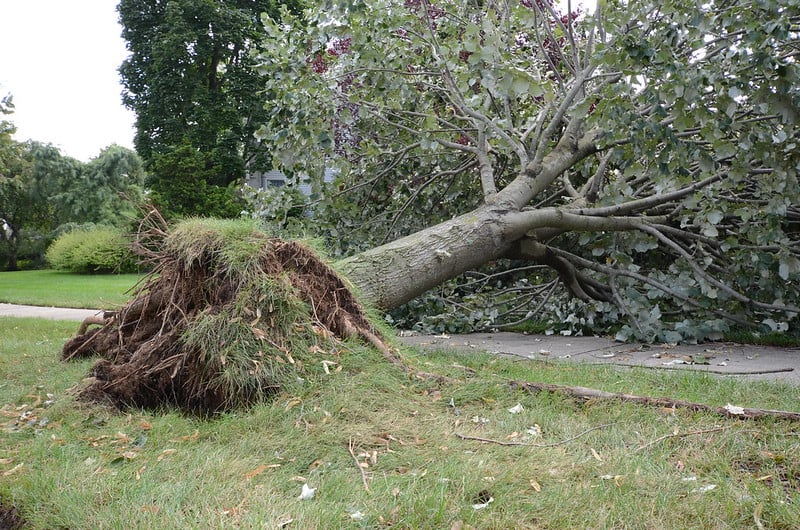
If the tree you need to remove is a fallen tree, that’s not going to cost nearly as much as a standing tree. Removing an upright tree comes with high risk, while a fallen tree eliminates most safety hazards that typically run up the bill.
If you need a team of professionals to remove a fallen tree from your yard, expect to pay an average price of $85 to $300.
Tree condition
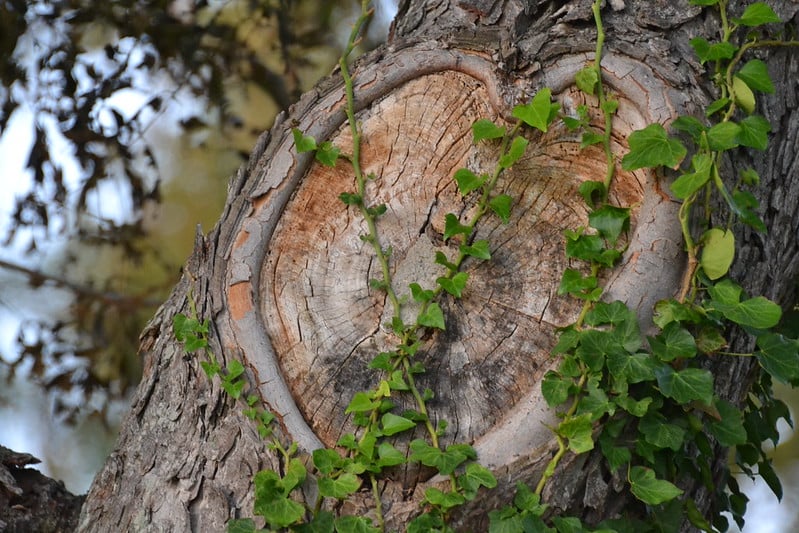
Sometimes the tree you need to remove from your yard isn’t healthy. Unhealthy trees can pose serious hazards, especially to the well-being of neighboring trees, and should be removed.
If you are removing an unhealthy tree that’s standing and still relatively stable, you may wind up paying the same price as removing a healthy tree. But many sick or even dead trees have a weaker structure than healthy trees and may prove easier (and cheaper) to remove.
The bottom line: You’ll need an arborist to inspect your tree and give a cost estimate based on its health. If a sick tree is relatively stable, it may cost as much as removing a healthy tree. Otherwise, removal costs will be significantly lower if the tree is weak.
Trunk diameter
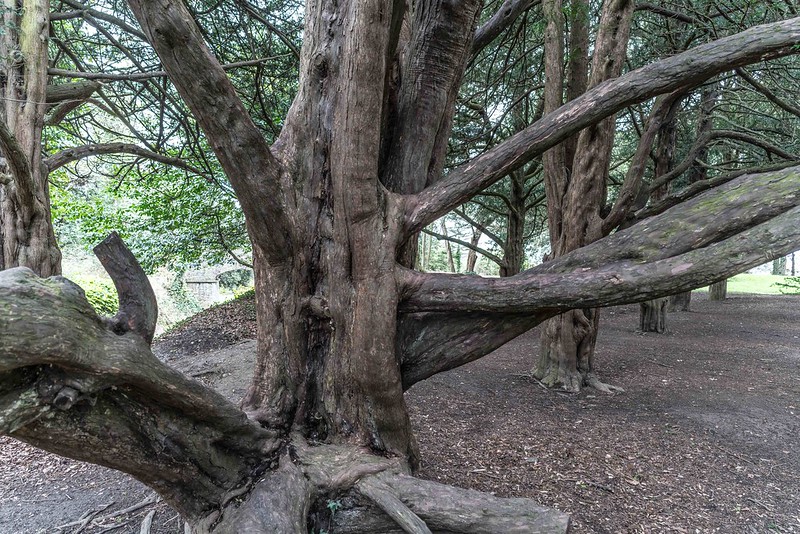
A tree trunk’s diameter is usually proportional to the tree’s height, which is why it doesn’t normally have a great effect on cost. But in some cases, it can.
For instance, a small tree with an exceptionally thick trunk may take longer to cut down than a small tree with a trunk proportional to its height. In this case, the thick trunk will likely require more work time, which will increase your bill. How much a bill will increase varies from project to project.
Accessibility

Removing an inaccessible tree can increase your final bill up to 50%.
Here’s why: A tree standing in an open yard or field is much easier to remove than a tree near your house, power lines, or other structure.
Removing an inaccessible tree requires significant preparation and specialized removal strategies to ensure nothing gets damaged.
Emergency tree removal
Did heavy winds cause a tree to fall on your home, car, or driveway? If that’s the case, you’ll want to have the tree removed right away, day or night.
Emergency tree removal will cost much more than standard tree removal. The price will vary significantly depending on when you make the call, the time needed to complete the job, and how dangerous removing the tree is.
Pro Tip: Some insurance companies may help cover emergency tree removal, so you may not need to cover the whole bill yourself.
Extra Services
Since a tree service company is already in your yard, why not pay them for a few more tree work tasks? After all, that tree stump will need to go, and you don’t want to pick up all the debris by yourself.
Throw in a few extra dollars for services like these that will get your landscape cleaned up after your tree is removed:
Stump removal
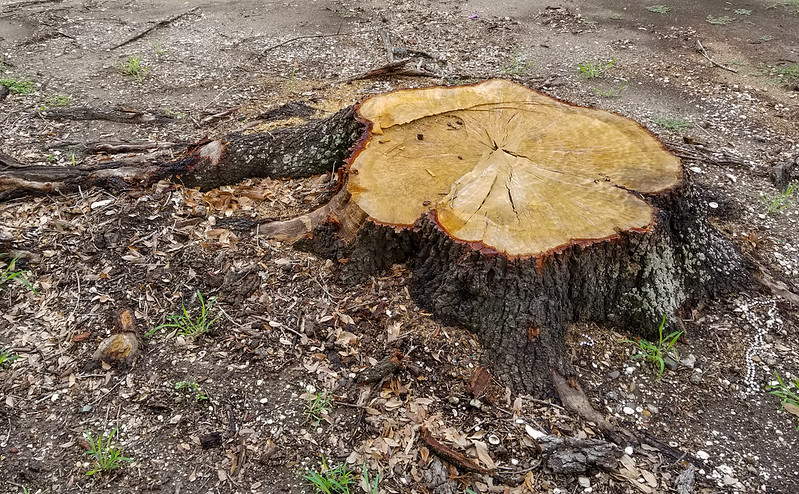
If you don’t plan on landscaping around your tree’s old stump, it’s going to be an eyesore and a tripping hazard. Removing a stump and its root system typically costs between $175 and $516, with most homeowners paying $326.
If you prefer to have the stump ground instead of removed, expect to pay between $158 to $450.
Debris removal
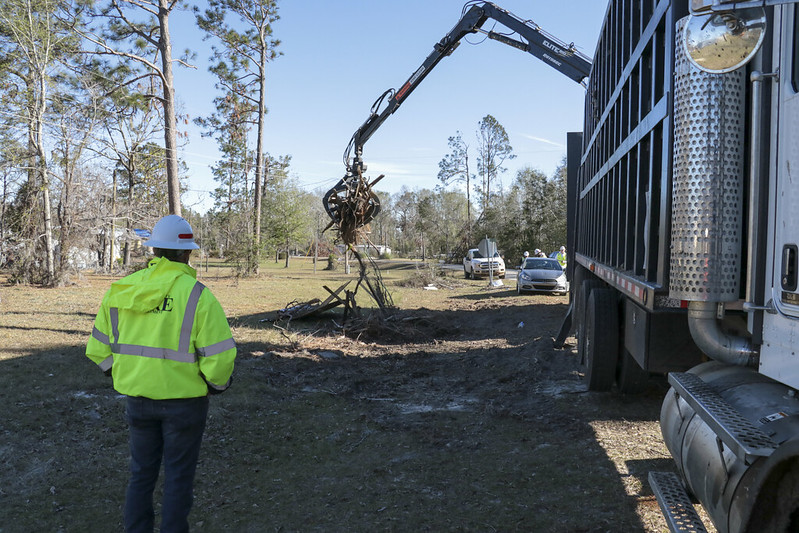
Once your tree is removed, your yard will be littered with woody debris. Some tree care companies may include debris removal as a part of their tree removal service, while others may charge debris removal as an additional fee. Ask your tree care specialist to review what services will be included in the final bill.
Hauling, chipping, and log splitting are three common ways tree care companies can remove the remaining debris. Let’s go over what they mean and how much you can expect to pay for each:
- Hauling: The tree removal company takes all the debris off-site. Hauling may add $50 to $90 to your bill.
- Chipping: Some tree care companies will run the debris through a chipper so you can use the wood chips as mulch in your yard. Chipping down the wood will typically cost between $65 and $125.
- Splitting: Need firewood for your wood stove or fireplace? Some tree care companies may split the debris into firewood for an extra fee between $50 and $90.
Tree transplanting
Want to have your tree transplanted instead of removed from your yard? On the low end, transplanting a tree can cost an additional $175. A high-end tree transplant project, such as a large tree or transporting the tree to a new site, will cost an additional $800 or more.
Tree trimming
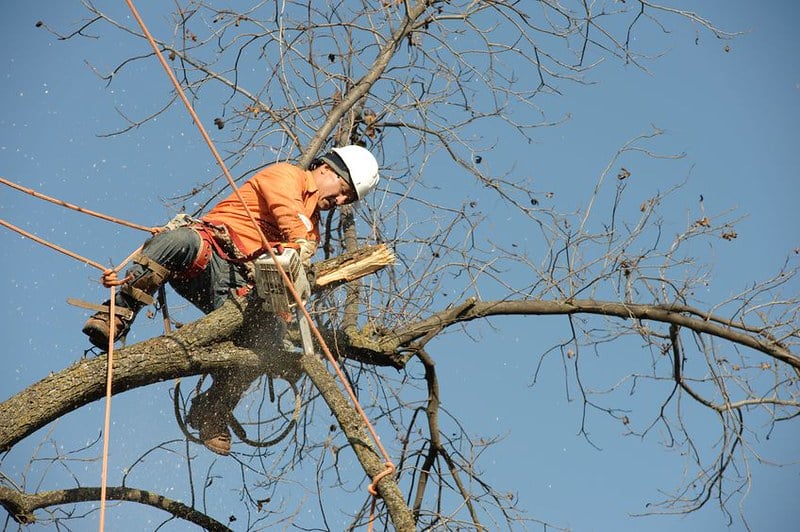
With one tree on its way down, your other trees may need some sprucing up. Trim back those overgrown branches so your landscape can sport beautiful trees and zero safety hazards.
Tree trimming costs typically range between $315 to $700, depending on the height of the tree.
Cost of DIY Tree Removal
Tree removal should be left to the professionals. Removing a tree poses serious safety hazards, including environmental concerns, property damage, and death.
Want to remove a medium to large tree yourself? We don’t recommend turning it into a DIY project. Call a professional.
Have a small fruit tree to cut down? We still recommend calling in the professionals, though there are ways to remove a small tree safely if done correctly.
Remember: All damages are your responsibility, including damage to property or injuring another person. In some cities, you may even be fined for attempting to remove a tree.
Equipment needed
A second pair of eyes is essential if you are planning to cut down a small tree. Having someone to watch your back will help increase safety.
Below are the tools needed to remove a small tree and their average costs:
| EQUIPMENT NEEDED FOR DIY TREE REMOVAL | COST |
| Safety glasses | $13 |
| Work gloves | $14 |
| Felling wedges | $24.50/pack of 4-6 wedges |
| Hearing protection | $25 |
| Hard hat | $28 |
| Chainsaw chaps | $71 |
| Steel toe work boots | $100 |
| Chainsaw | $150 |
| TOTAL | $425.50 |
How to remove trees yourself
Removing a tree yourself is no easy feat. It takes precision, responsibility, and learning how to do it the right way. While we recommend hiring a professional to do the job for you, find out how you can safely cut down a tree in 10 steps.
DIY cost vs. professional tree removal cost
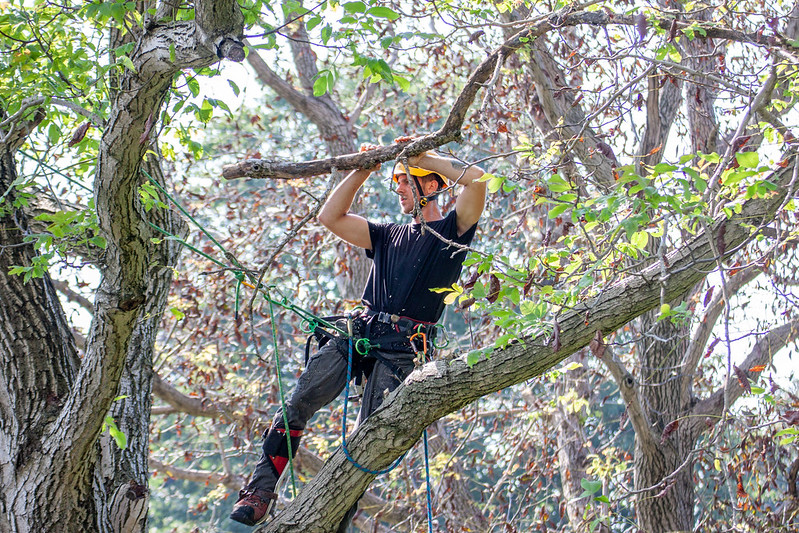
If none of the equipment to cut down a tree is sitting in your garage, it may be cheaper to hire a professional. Cutting down that small fruit tree in the front yard might cost you about $425.50 for all the equipment, while a professional’s help typically ranges between $150 and $385 for small trees.
When it comes to those bigger trees, it certainly would cost less to do it yourself, but only to a certain extent –– money isn’t always the only cost.
The larger the tree you attempt to cut down, the greater the risk involved. You may seriously damage your property or go to the emergency room if you try to cut down a tree beyond your expertise.
For bringing down larger trees, hiring a professional is always worth the investment.
Cost of Tree Removal by Location
Tree removal costs will vary depending on where you live. The numbers we’ve shown you in this pricing guide are national averages. Tree removal costs near you may be different than the national average depending on local tree care provider rates.
Common tree types or common tree diseases in your area may also affect costs.
FAQ About Tree Removal
Most cities and counties require homeowners to obtain a permit to remove a tree from their property, though there are some exceptions. So, before hiring an arborist to chop down your tree, check your local laws to see if you need to obtain a permit first.
You don’t want just anyone cutting down your tree. Tree care is a worthy investment that can have substantial results on your landscape and the value of your home. Deciding who ought to take care of or remove your tree is not a decision to take lightly.
An arborist is someone who is trained, certified, and knowledgeable in expert tree care. Arborists must also renew their certification, which keeps them up to date on the latest techniques and safety measures in arboriculture.
Avoid hiring anyone to remove your tree who doesn’t have an arborist certification or who isn’t insured. Otherwise, you risk having an inexperienced person perform a dangerous job on your property.
In some cases, there is no “right time of year” to remove a tree. If your tree is unhealthy or is a safety hazard, you will want it removed right away regardless of what time of year it is.
But if your tree isn’t in immediate need of removal, chopping down a tree (or chopping up a fallen tree) between late winter or early spring can prove to be the most convenient time.
Why late winter or early spring? Dormant deciduous trees will typically be lighter and have no leaves, making them much easier to cut down and remove debris.
Another reason late winter and early spring are good times to bring down trees? Falling branches will likely cause less damage to your flower beds if the tree limbs land there. Your flowers probably won’t be in bloom, and the cold solid ground will help prevent disruption in the soil.
Conclusion
Given the expert know-how required and the risk factors involved in removing a tree, this project is best handled by a professional. Call a local landscape professional near you to have your tree removed with peace of mind.
And if it’s a small tree you need removed and you don’t have the needed gear in the garage, hiring a professional often will cost less than removing the tree yourself.
Expect to pay between $385 to $1,070 or $10 to $14 per foot for a tree removal service. If you’re having a huge tree removed, make that closer to $2,000.
Main Photo Credit: Matthew Paul Argall / Flickr / CC BY 2.0